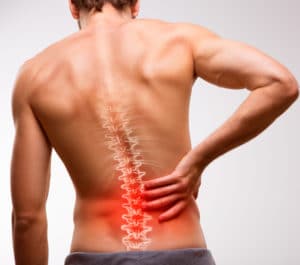
Back pain is one of the most common medical problems in the United States. The spine is the central structure in the body, and your back muscles are involved in every lift, bend or twist that you do. Because of that, the spine undergoes a lot of stress whether you are sitting, standing or lying down, and it is therefore very prone to injury. Our spinal surgeons are experts in their field—offering the treatment options and return to function that you deserve.
SPINAL ANATOMY
The spine is the central structure in the body. It is made up of 33 individual bones that are stacked on top of one another, connected through spinal discs. This special stacked spinal structure allows people to bend, twist and flex their body.
Apart from the ease of movement, the spine also helps protect vital organs from shock and injury. Important blood vessels and sensitive nerves that run through the spine supply blood to the limbs and head, while also allowing you to move your arms and legs.
SPINAL CURVES
Generally, the anatomy of the spine is understood by dividing it into three different sections.
The section at the top is the cervical spine. It runs from the shoulders to the neck and connects with the skull. The middle section is called the thoracic spine, which is a curved section that runs down the back. This section of the spine is connected with the ribcage. The section at the bottom is called the lumbar spine, which connects to the sacrum, a wedge-shaped vertebra at the base of the spine.
The cervical spine consists of 7 vertebrae bones, the thoracic contains 12 vertebrae, and the lumbar has 5 vertebrae. There are five additional bones in the sacral region of the spine and four in the coccygeal region, which are part of the vertebral column and run into the hips.
PARTS OF A VERTEBRA
Each individual vertebra in the spine is made up of various jointed parts. The central part of the vertebra bears the weight of the bones above and serves as a platform for the fibrous spinal discs that separate spinal bones.
There is a large hole in the center of each vertebra called lamina. It provides the opening for spinal cords and nerves to pass through and the surrounding bone structure provides protection to them.
There is a spinous process on each vertebral bone that extends out and two bilateral transverse processes on each side that allow muscles on the back to attach to the spine.
There are four facet joints on each vertebra, two on each side. A pair of these is faced upwards and another is faced downwards. These connect with the adjacent vertebra on the column above and below to give the spine stability and make it easier to move.
The vertebral bones are separated from one another with the help of spinal discs resting between these bones. Each disc has a tougher layer outside called the annulus and a mushy center called the nucleus. Quite often, back pain occurs due to ruptures in these discs that cause the mushy nucleus to leak out and the vertebral bones begin to pinch or compress a nerve.
MUSCLES
There are two main muscle groups that complete the spinal column. These are called the extensors and flexors. The extensor muscles are attached to the back of the vertebral column and enable us to stand up and lift objects. The flexor muscles are located at the front and allow us to bend forward, backward or twist to one side.
COMMON SPINAL CONDITIONS
-
- Cervicalgia
- Degenerative disc disease
- Discitis
- Flatback syndrome
- Herniated disc/Disc displacement
- Kyphosis
- Osteoporosis
- Pseudarthrosis after fusion
- Radiculopathy
- Sacroiliitis
- Sciatica
- Scoliosis
- Spinal fractures / Vertebral compression fractures
- Spinal stenosis
- Spondylolysis & Spondylolisthesis
- Sprains and strains of the neck/back
COMMON TREATMENT OPTIONS FOR SPINAL CONDITIONS
-
- Allografts & autografts for bone grafting
- Anterior Cervical Discectomy and Fusion (ACDF)
- Anterior Lumbar Interbody Fusion (ALIF)
- Decompression
- Kyphoplasty
- Laminectomy and laminotomy
- Laminoforaminotomy
- Lateral Interbody Fusion (XLIF)
- Microdiscectomy
- Mobi-C cervical disc replacement surgery
- Posterior Laminectomy and Instrumented Fusion (PSIF)
- Posterior Lumbar Interbody Fusion (PLIF)
- Posterior Spinal Fusion (PSF)
- Spinal osteotomy
- Transforaminal Lumbar Interbody Fusion (TLIF)
All information provided on this website is for information purposes only. Please consult a healthcare professional for medical advice.




No Comments
Sorry, the comment form is closed at this time.